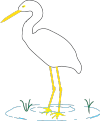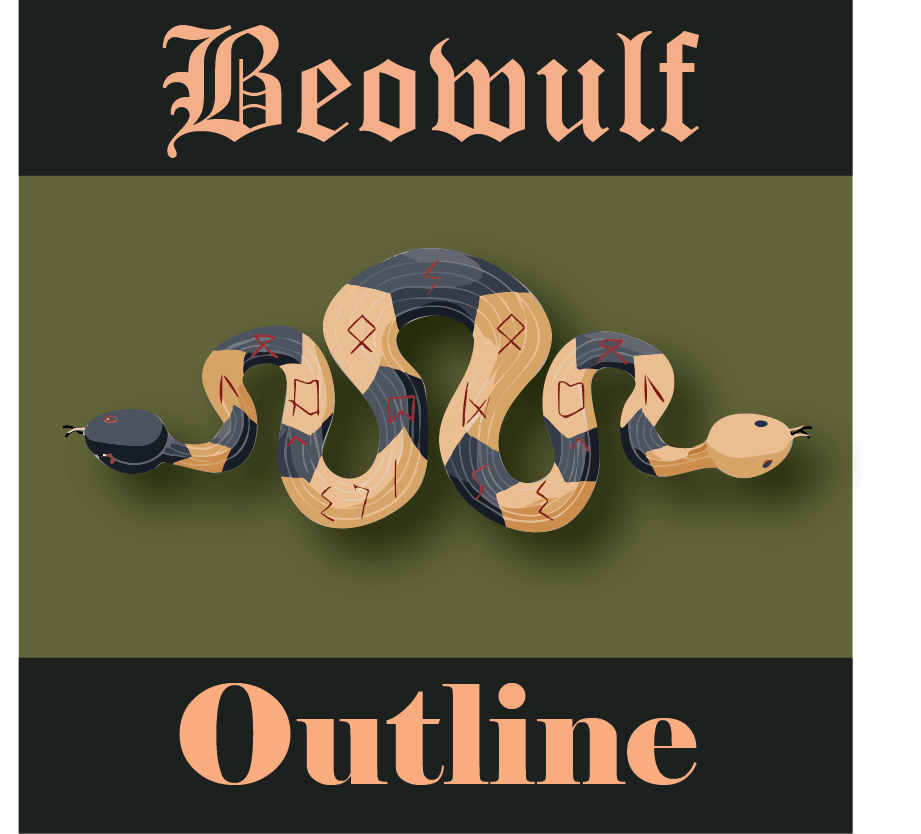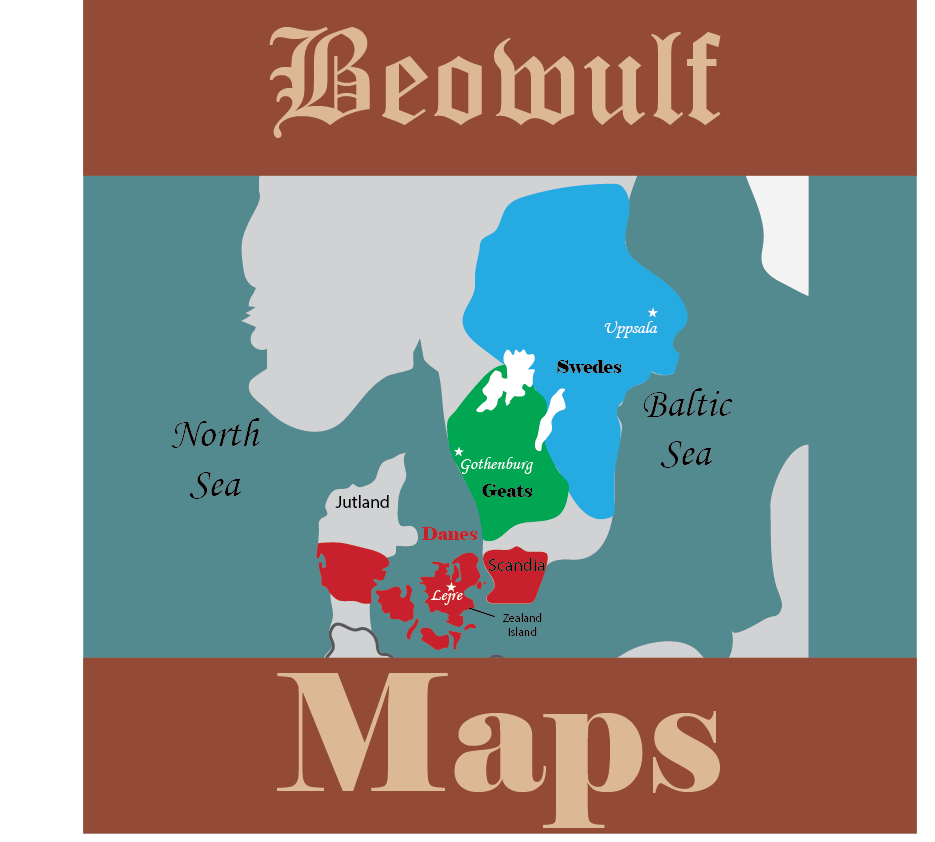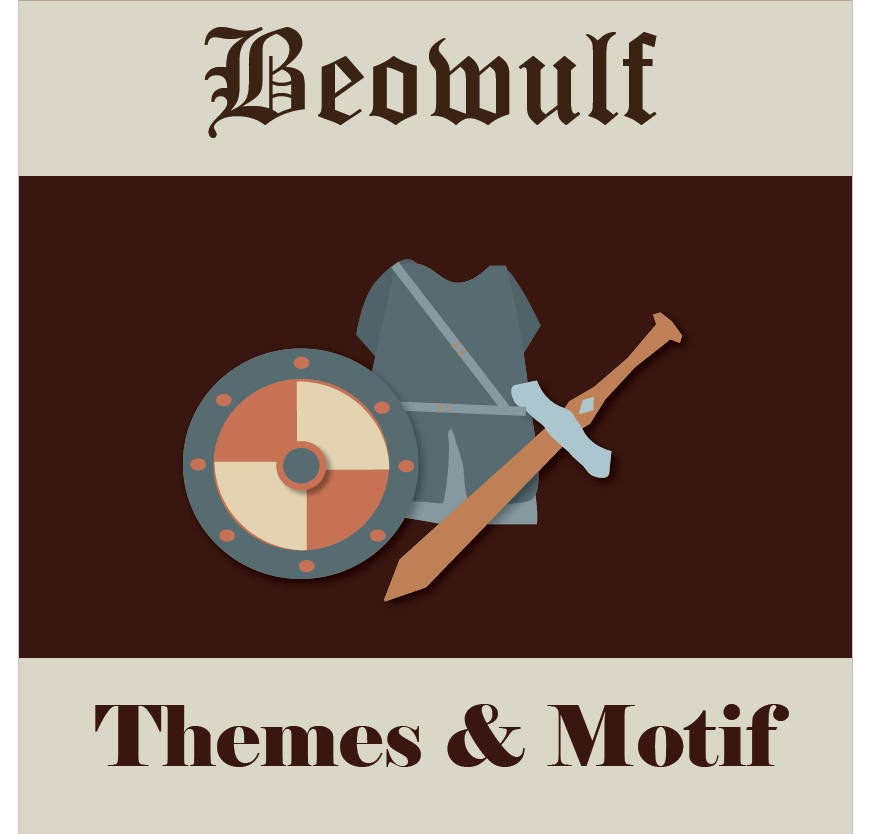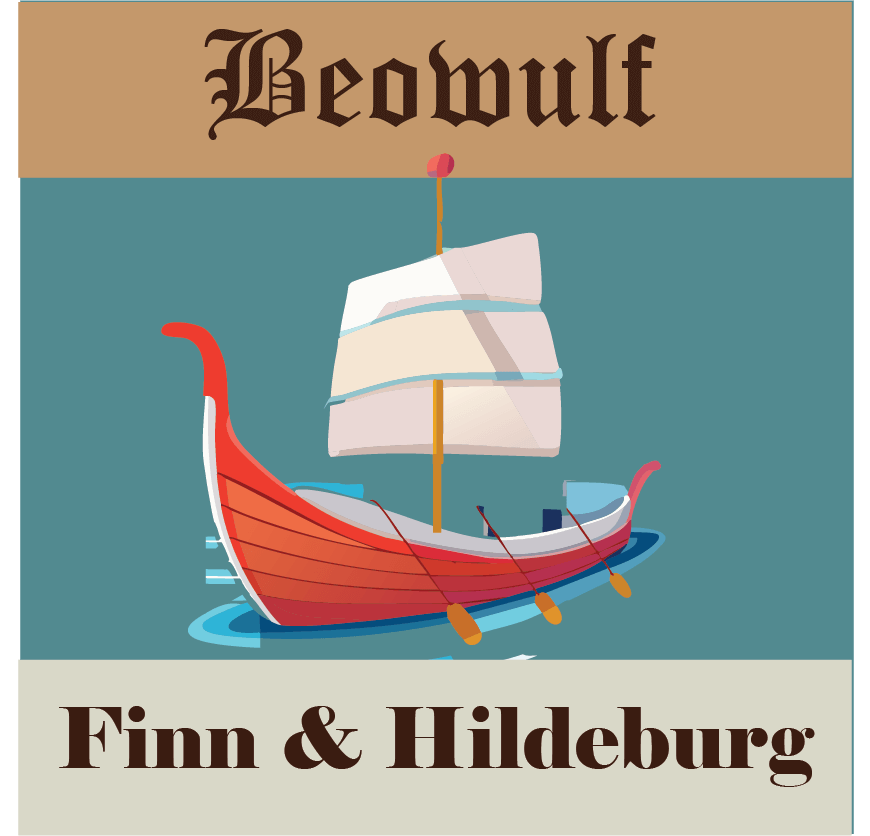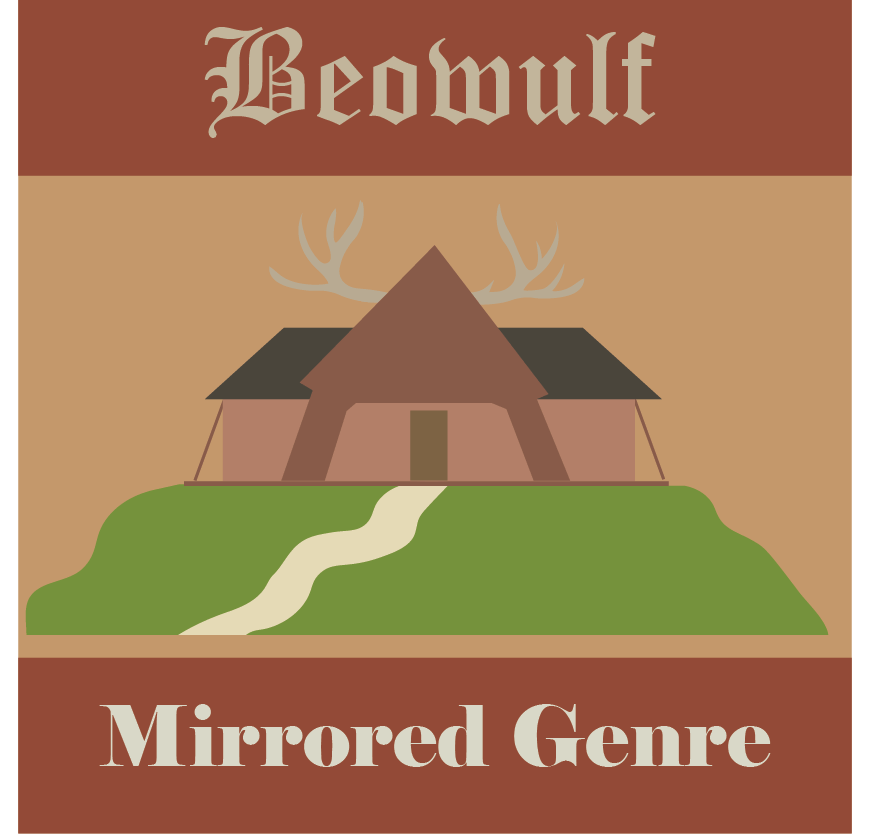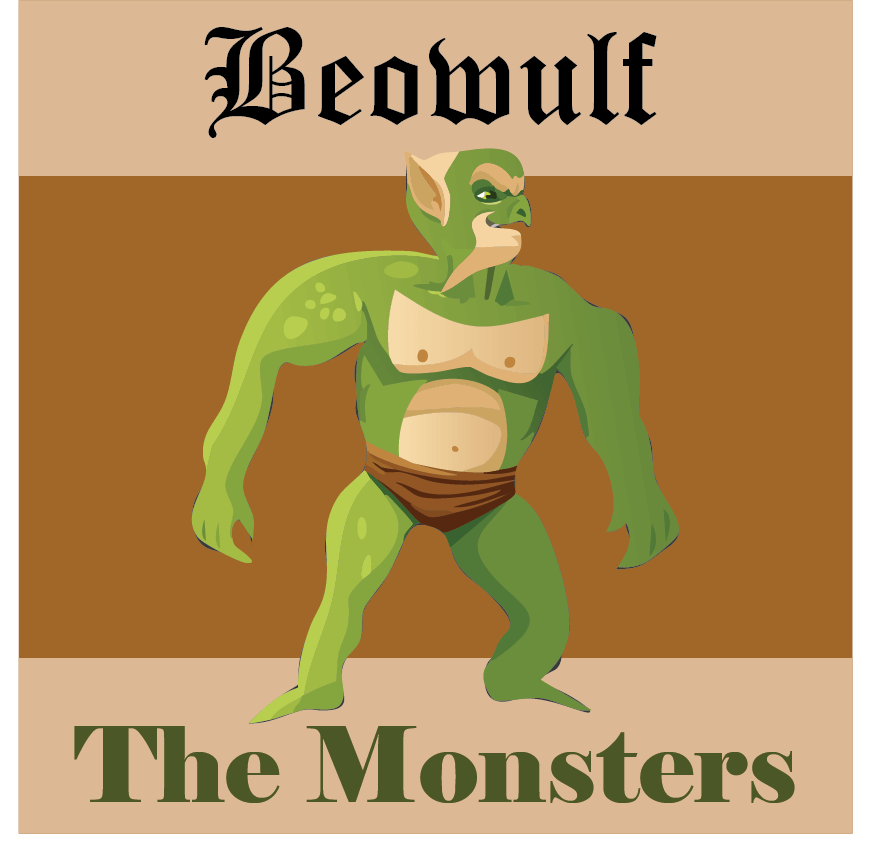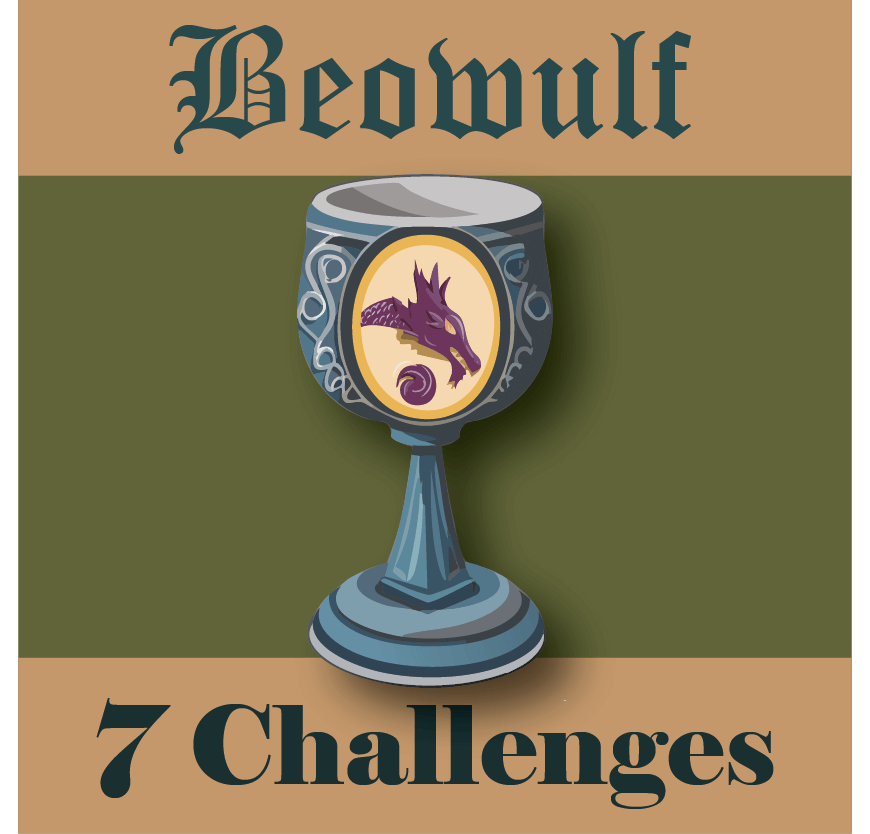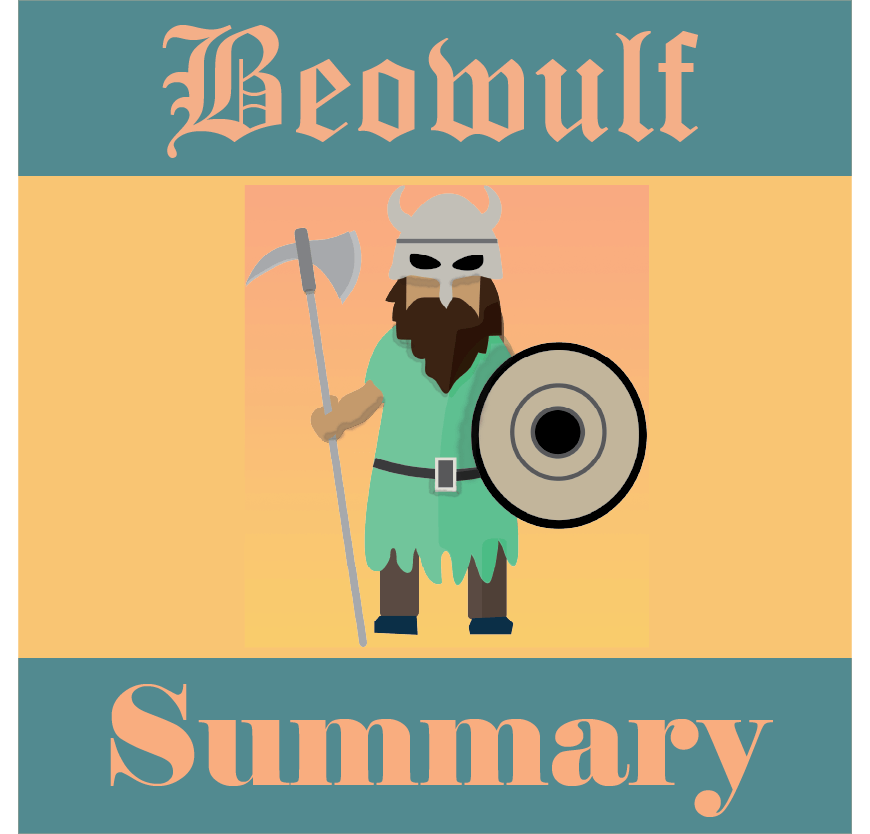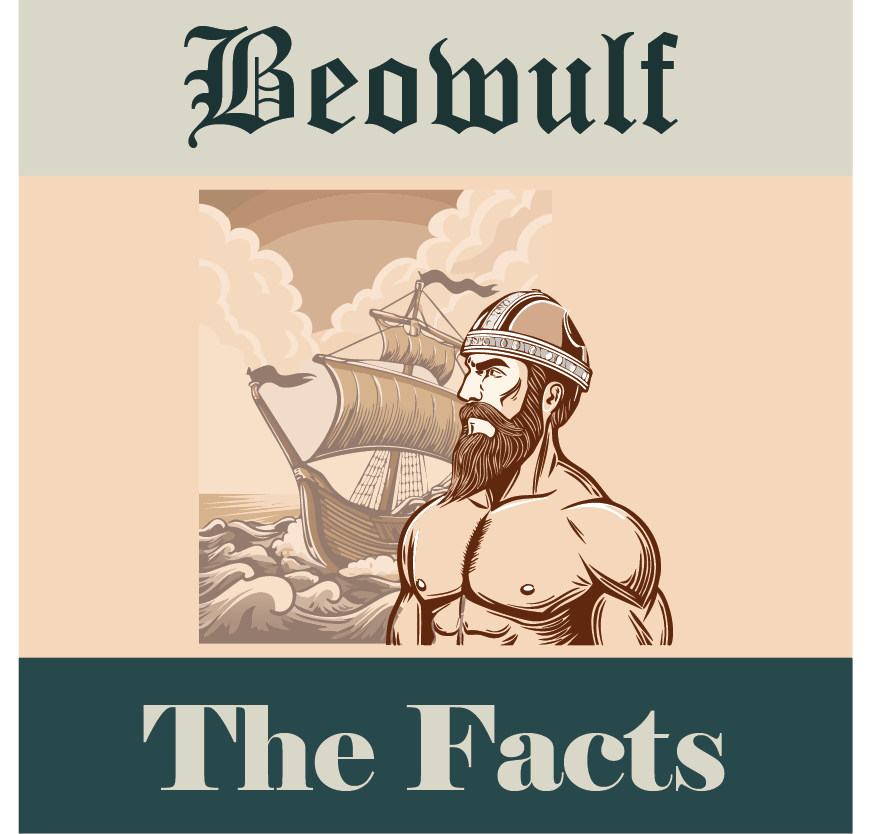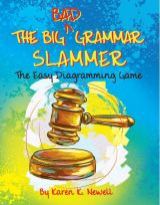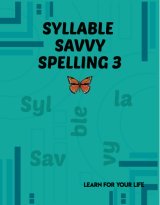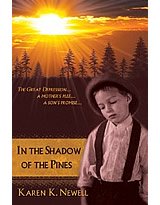
Beowulf Death & Burial Location
Search the geographic, poetic, and archaeological clues to find
the location of Beowulf's death and burial.
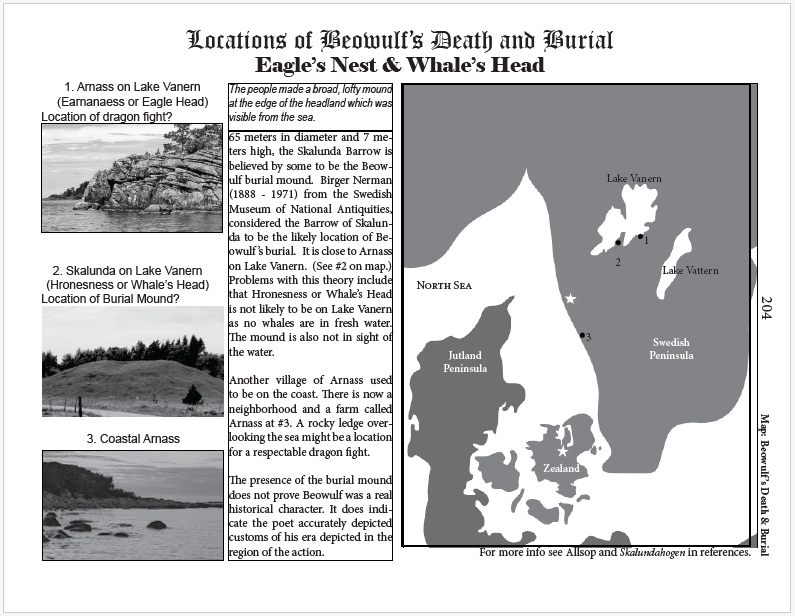
Points labeled #1, #2, and #3 will be referred to in the information below.

The worksheet above is page 204 of Facing the Dragon: The Beowulf Unit Study. More information on the unit study is below.
Where Did Beowulf Die?
Short Answer: Earnaness or Eagle's Nest in western Sweden

Area of Beowulf's Reign
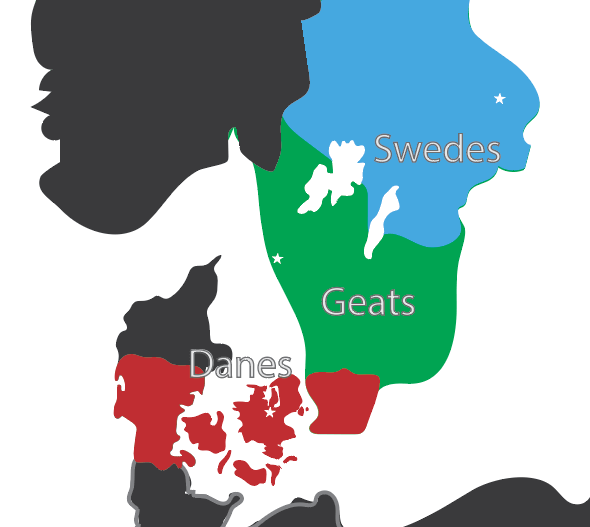
Gothenburg, Sweden is theorized to be the location of the Geat kings - a very logical theory. Gothenburg is identified by the star in the green area on the map above.
The dragon that killed Beowulf was flying around his home country destroying villages. Therefore we should look for Earnaness in western Sweden, not too far from Gothenburg.
Location of Earnaness
Also called "Eagles Nest" or "Arnass"
Per the picture above from our unit study shown at the top of this page, two areas named "Arnass" are in the general location.- A location on Lake Vanern in Sweden is identified as #1 in the picture above. Per a historical marker visible in Google Maps at the site, it was the location of the Arnass Castle built about 1250. That's about 800 years (estimate) after Beowulf, so it's too late for a direct connection to our hero and his dragon. However, it IS on a big lake. (See pic below.)
- An ancient town south of Gothenberg on the coast of the North Sea boasted the name Arnass. Today there is an Arnass Farm marking that approximate location, marked #3 at the top of the page. Did the town once host a famous dragon fight?
Clues From Beowulf
Unfortunately, the unnamed Beowulf author did not use Google Maps to identify the location. We can, however, trace these clues about the location of Beowulf's last great act:A deep burial mound
Beowulf Unit Study, pg 151In the grave on the hill a hoard it guarded, in the stone-barrow steep.
A strait path reached it, unknown to mortals. (Gummere Line 2212)
Underground cave
Beowulf Unit Study, pg 161cave within to the heathen hoard (Gummere, 2216)
Close to the sea
Beowulf Unit Study, pg 171he led them on till he came in ken of that cavern-hall, the barrow delved near billowy surges, flood of ocean. (Gummere, 2410)
A stone arch with stream rushing out
Beowulf Unit Study, pg 171an arch of stone; and within, a stream, that broke from the barrow (Gummere, 2542)
Tall Arch
(Beowulf stood under the arch to deliver his challenge to the dragon within)Beowulf Unit Study, pg 171
clear his cry 'neath the cliff-rocks gray (Gummere, 2553)
Location was close to woods
Beowulf Unit Study, pg 171to the woods they bent them, their lives to save (Gummere, 2598)
Old English: "holt"Color of the stone was gray
Beowulf Unit Study, pg 187Now quickly go and gaze on that hoard 'neath the hoary rock (Gummere, 2744)
Old English: "harne stan"On a Cliff
Camp of Waiting Soldiers was near-by
Beowulf Unit Study, pg 197 battle-toil bade he at burg to announce, at the fort on the cliff,
where, full of sorrow, all the morning earls had sat, (Gummere, 2892)
Eagle's Nest
(The troops rose and went to Earnanaess to see their deceased king.)Beowulf Unit Study, pg 199
they climbed to the Cliff-of-Eagles (Gummere, 3031)
Old English: "under Earnanæs"Dismal passage to the cave
Beowulf Unit Study, pg 202my path was made in no pleasant wise, under the earth-wall (Gummere, 3089)
Old English: "nealles swæslice siðalyfed inn under eorðweall"The cliff hung over the water
(The dragon was cast into the sea from the cliff)Beowulf Unit Study, pg 202
The dragon they cast o'er the wall for the wave to take (Gummere, 3131)
Old English: "wyrm ofer weallclif, leton weg niman, flood fæðmian"Location of Beowulf's Dragon Fight and Death?

But, if you check the map below, you will see that the location marked on the map is called "Bjorkullsand." It is less than two miles from the location of the old Arnass Castle as the eagle flies - or in this case as the dragon flies.
And there is a Bjarki-character in Scandanavian folklore that some people believe was a precursor to Beowulf. Any connection to that name and Bjorkullsand?
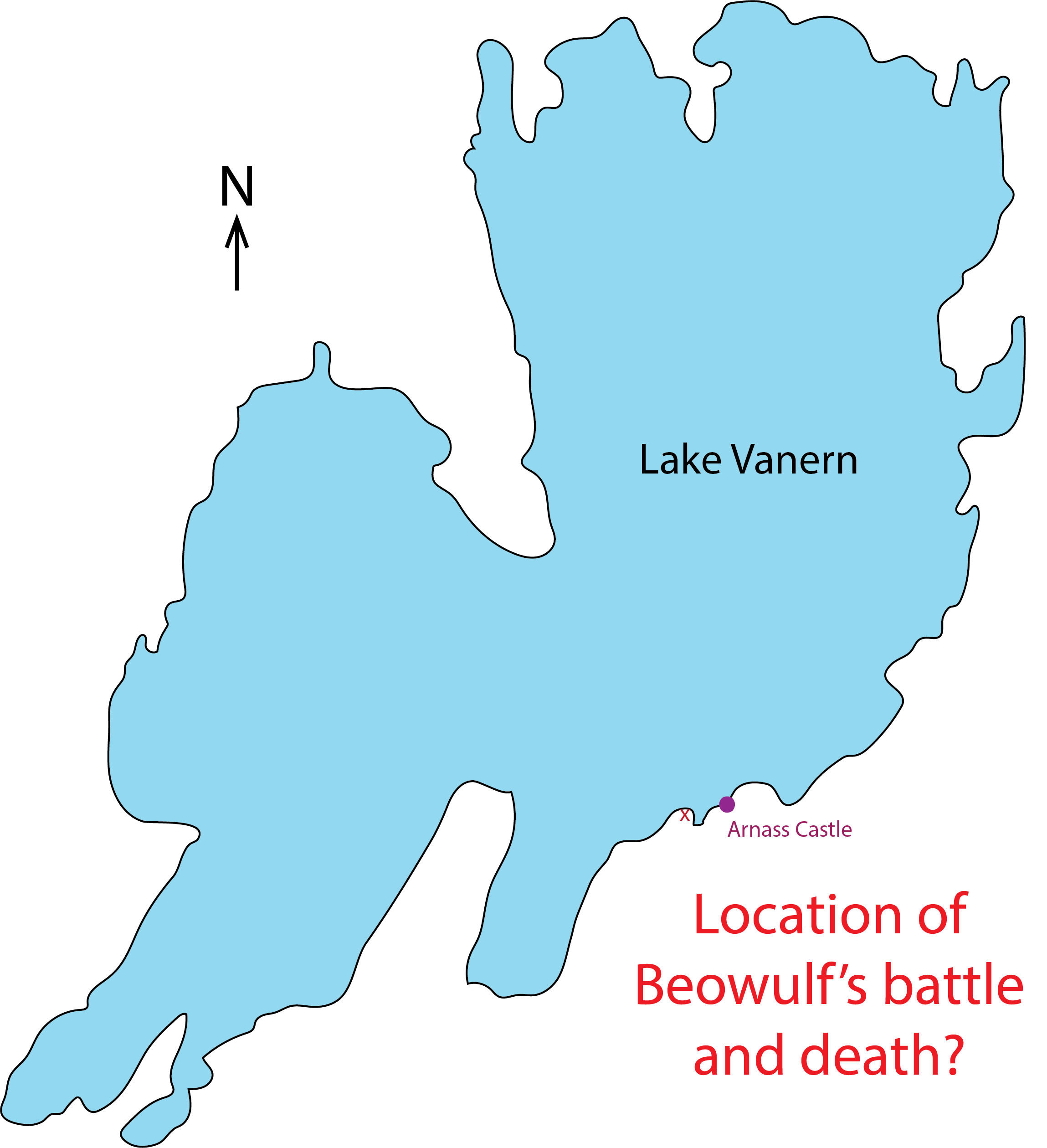

Alternative for Arnass: North Sea Coast
An alternative location for both the dragon fight and the burial is marked as #3 on the worksheet above: Coastal Arnass. There was an old town of Arnass in that location. Today, all that is left of the nomenclature is Arnass Farm.Are there any reasons to prefer Arnass #1 (Lake Vanern) over Arnass #2 (North Sea Coast)? Keep reading to find out.
How did Beowulf Die?
Short Answer: Dragon fight
As the paragraphs above attest, the hero was killed fighting a fire-breathing dragon on a coastal cliff whose name is translated "Eagle's Nest."It was a three-strikes and you're done scenario. Except Beowulf took the dragon out with him (with a little help from his young cousin Wiglaf.)
Strike One: The Sword Failed
Beowulf Unit Study, pg 175
Its edge was turned
brown blade, on the bone,
and bit more feebly
than its noble master had need of
in his baleful stress. (Gummere, 2577)
Strike Two: Flames Surrounded Him
Turns out that his first sword strike only infuriated the mad beast even more.Beowulf Unit Study, pg 175
Then the barrow's keeper
waxed full wild for that weighty blow,
cast deadly flames; wide drove and far
those vicious fires. (Gummere, 2580)
Strike Three: Grabbed by the neck
Now things get really bad. Of course, the author announced at the beginning of this section that Beowulf was going to die, so it really shouldn't be a big suprise. But still.Whatever hope the reader didn't have that he might survive is evaporated in this moment.
Beowulf Unit Study, pg 183
its bitter teeth
closed on his neck, and covered him
with waves of blood from his breast that welled. (Gummere, 2693)
Autopsy Report: Death by Poison
The official cause of death was not the failed sword fight, the encircling flames, or the dragon-bite (of which any single one could do it.) We learn in the next section that the poison from the dragon spread through his body.Beowulf Unit Study, pg 187
The wound began,
which that dragon-of-earth had erst inflicted,
to swell and smart; and soon he found
in his breast was boiling, baleful and deep,
pain of poison (Gummere, 2711)
Where Was Beowulf's Funeral?
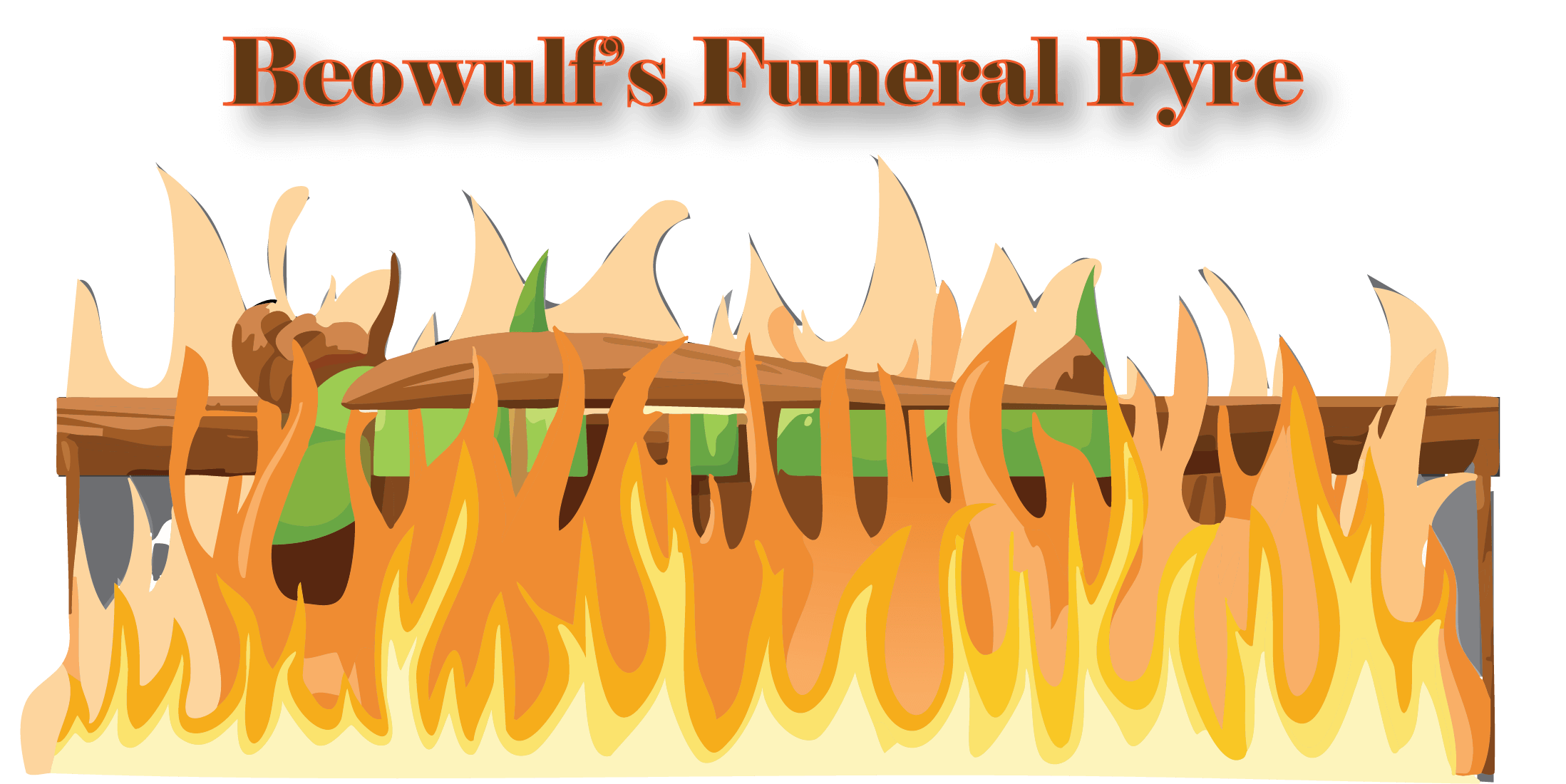
Short Answer: Hroneness (Whale's Head) in western Sweden
Beowulf's funeral and burial were not far from the site of his death. (The burial spot was at the site of his funeral pyre.)In Fitt 42 (Lesson 12 of the unit study) it states that they threw the dragon over the cliff into the water below, they gathered the treasure from under the mound, laid it on the wagon with Beowulf's deceased body, and gathered wood for the fire. They then left the site of the dragon-fight and went to a place called Hronesness (Whale’s Head).
There the body was burned per their custom.
Where Was Beowulf Buried?
Short Answer: at his funeral site - see above
Beowulf was both burned and buried.Beowulf's Instructions
On his death bed, he gave Wiglaf these instructions:
Bid the men to build a barrow (mound) on the headland (cliff) of the coast after my body is burned in the funeral pyre. It shall tower high on Hronesness (Earnaness, Arnas) as a reminder. Sailors afterwards will call it Beowulf’s Barrow.” (Facing the Dragon - Beowulf Unit Study, pg 190)
A barrow bid ye the battle-fanned raise
for my ashes. 'Twill shine by the shore of the flood
to folk of mine memorial fair
on Hrones Headland (Hronesnæsse,) high uplifted,
that ocean-wanderers oft may hail
Beowulf's Barrow, as back from far
they drive their keels o'er the darkling wave. (Gummere, 2802 - 2807
Wiglaf's Message
Wiglaf was true to Beowulf's request. He reported it to the ten other warriors:
He said many things to me. He bade me to greet you, and raise a barrow on the site of the pyre which would befit his exploits as the most renowned warrior. So let us hasten to see those gems. Let his funeral bier be made ready quickly. We will bring our prince to it who will then be held in the Almighty’s keeping. (Facing the Dragon - Beowulf Unit Study, pg 202)
The wise old man spake much in his sorrow, and sent you greetings
and bade that ye build, when he breathed no more,
on the place of his balefire a barrow high, memorial mighty (Gummere, 3094)
Transport to Hronesness
The body and treasures were transported to Whale's Head and the finale of the story.
They piled a countless amount of twisted gold on a wagon with Beowulf and took it to Hronesness (Whale’s Head). (Facing the Dragon - Beowulf Unit Study, pg 202)
Then the woven gold on a wain was laden
countless quite! And the king was borne,
hoary hero, to Hrones-Ness. (Gummere, 3134)
Where Is Hronesness or Whale's Head?
So where should we look for the site of Beowulf's funeral prye and burial mound? Where might we find Whale's Head?Of course, it's unknown. (A coastal cliff named Whale's Head in modern time would just be too easy, wouldn't it?)
We will, however, offer you a couple of options.
Theory #1- Hronesness on Lake Vanern
Per the picture in the worksheet at the top of this page, we might place the burial (as well as the dragon fight) at Lake Vanern.There's some justification for this:
- Vanern appears to have been a dividing point between Geats and Swedes.
- One of the skirmishes between the Geats and Swedes (a prominent theme of the second book) took place on the lake.
- Lake Vanern, called Lake Weder in the Anglo-Saxon poem, gave the Geats their nick-name Weder. (Tolkien changed it to weather-loving since the "d" and "th" could be confused.)
- The location of his dragon-battle at "Eagle's Nest" or "Arnass" or "Earnaness" is associated with the Arnass location on Lake Vanern. (See above on location of Beowulf's death.)
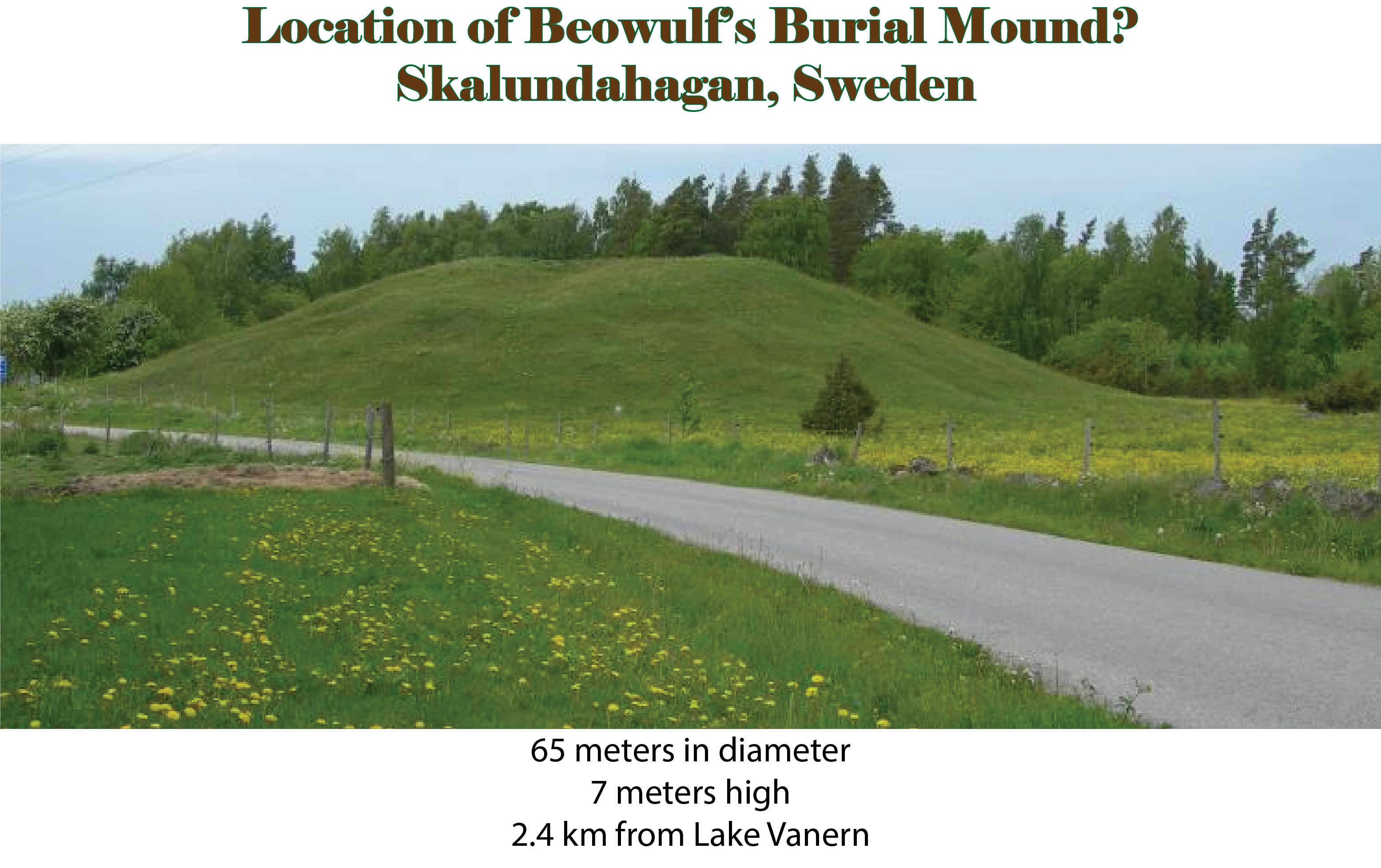
Birger Nerman (1888 - 1971) was a Swedish archaeologist who liked to dig around in old burial mounds. This included the royal burial mounds in Uppsala, Sweden, where Hygelac & Beowulf's very historical enemies - King Ongentheow and sons - were buried. He identified the Skalunda Mound, right outside Skalundahogen Village, as the site for Beowulf's burial.
Unfortunately, no one gave Mr. Nerman and the Swedish Museum of Antiquities the funds to go digging up the Skalunda Barrow, so to this day we don't know. (Those Swedes are NOT giving the Geats equal treatment in their research funds, I'd say.)
Since archaeological digs can run into hundreds of thousands of dollars per meter, and Skalundahogan Barrow encircles over 450 meters of dirt, it would take a large investment to look for someone who - in all likelihood - isn't there. (Being fictitious and all)
There are, in fact, three objections to this site:
- It's not exactly on the lake. One and a half miles is a believable distance from Arnass for the wagon to cart Beowulf and treasures for the ceremony. But Skalunda is inland just a tad bit to call in Hronesness. The ness indicates a cliff on a lake. Sailors wouldn't be able to see Skalunda Barrow from their ships.
- Whale's Head seems to indicate it would be on the ocean. No whales in Vanern or other fresh water lakes.
- Beowulf was a fictitious character. Which means you aren't going to find his body.
Anti-thesis:
- The barrow could have been high enough to see from the sea, but it collapsed with time.
- A cliff might have been shaped like a whale's head or had another reason for sporting that name.
- The Beowulf poem's historical accuracy continues to surprise researchers. Beowulf may have been based on a real character and certainly the customs in the poem were real.
Theory #2 - Hronesness on the North Sea Coast
As worthy of a location as Lake Vanern may be, some prefer the wild waves and cragged coast of the North Sea as a more laudable memorial to our epic hero. Since sailors from afar were to view Beowulf's Barrow, the ocean might seem the more logical choice.An Arnass Farm near the coast is noted above, which might have been the Eagle's Nest of the dragon fight. Since it's near the coast, the Geat's wagon would have made a short trip to transfer Beowulf and treasure to the coast for his funeral and burial. The coastal location also agrees more readily with the name "Whale's Head."
A well deserve shout-out to the archaeologist Keith Allsop from "The Road to Hearot" (https://theroadtoheorot.com/beowulfs-barrow/) for his work on Beowulf's Barrow located on the Getteron Peninsula of the North Sea Coast south of Gothenburg. He even identifies a specific mound with interest-raising stones that might have been a wall around the mound.
While some may gravitate to Theory #2 (the North Sea coast) as the more convincing location for "Whale's Head," we should also evaluate if an eagle would live along an ocean coast instead of a lake. While eagles don't like to cross large bodies of water due to food supply on the surface, they have no problem hunting along the coast of either oceans or lakes.
But, we need to ask, would a dragon feel inclined to lodge along an ocean coast?
Below are some of pictures, courtesy of Google Maps, from the area of Getteron (#3 in map at the top of the page.) I have not been in the neighborhood myself, but it does seem that a respectable dragon might agree to sit for 300 years on cursed treasure in one of the hills in the region.
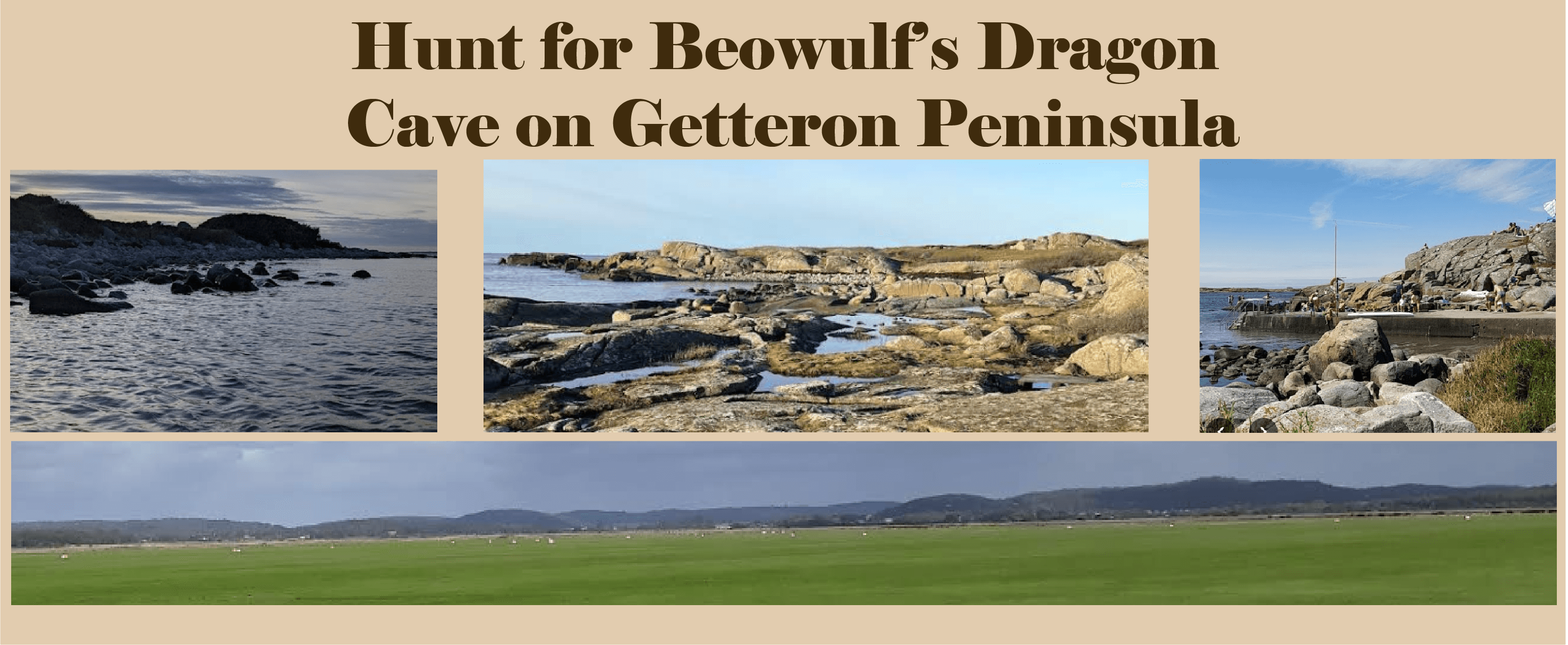
References
Allsop, Keith. (undated, webpage) "Beowulf’s Barrow" webpage on: The Road To Hearot. Accessed 1/5/2025. https://theroadtoheorot.com/beowulfs-barrow/Google Maps: Pictures of Bjorkullasand, Skalunda Barrow, and Getteron Peninsula
Gummere, Francis. 1909. Beowulf. Accessed 08/19/2024. https://www.mit.edu/~jrising/webres/beowulf.pdf
Newell, Karen. 2025. Facing the Dragon: A Beowulf Unit Study. Learn For Your Life Publishing
Spotting History website: Skalundahögen "Sklanda Barrow" (undated webpage) Accessed 01/05/2025 https://www.spottinghistory.com/view/2113/skalundahogen/
Get the Beowulf Unit Study
Unlock the action plot, history, and debates of the ancient tale.

Available in Paperback OR Printable Download
253 pages (Includes Student Pages, Teacher Key, References, Maps, Charts and More!)
Print It Now


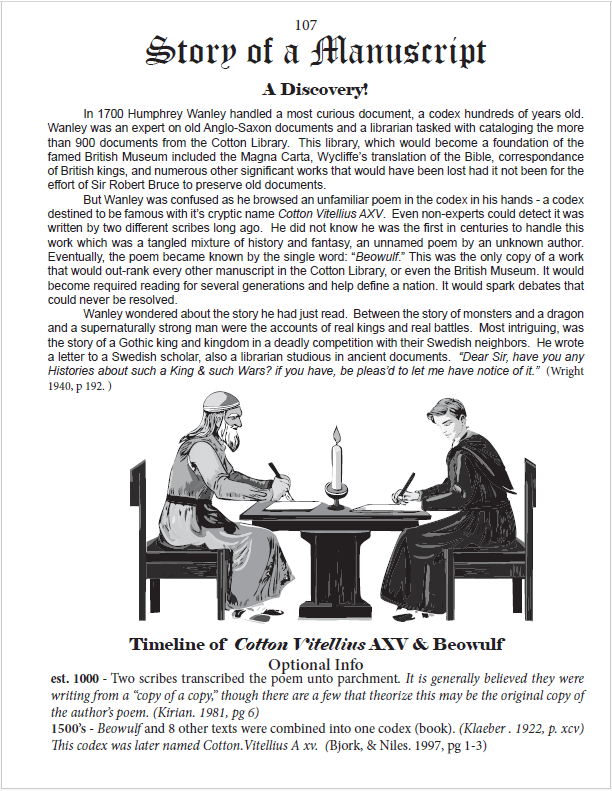
![]()
$5.99 Your link to print will last for five days.
Ready-in-a-minute lesson plans can be used with any translation.
Easy-to-read summary for each section.
Softcover Edition - Mailed to You
The same pages are in the softcover book and the printable file. Keep your papers bound together and use this book for years to come. It will be your go-to-guide for all things Beowulf!

![]()
17.95 Soft Cover Manual
Mailed to You
Beowulf Pages
Check here for all things Beowulf.
-->
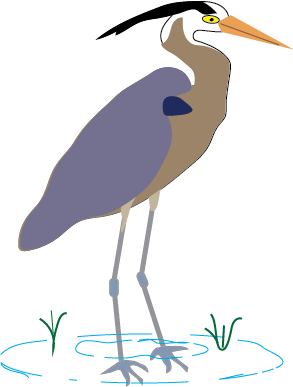
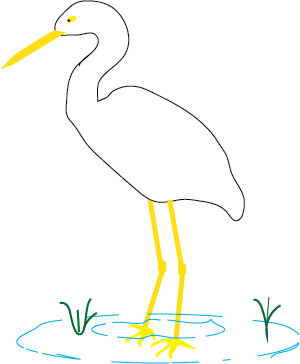
About Our Site
Hands-On Learning

